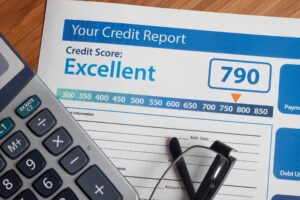**Title: Mastering the 1031 Exchange: Essential Tips for Real Estate Investors**
**Introduction**
For real estate investors, taxes are an inevitable part of the deal. However, 1031 exchanges, named after Section 1031 of the IRS tax code, offer a way to defer capital gains tax under certain conditions. This guide provides essential tips and rules for navigating 1031 exchanges effectively.
**What Is A 1031 Exchange?**
A 1031 exchange, also known as a like-kind or Starker exchange, is a real estate investing tool that allows investors to exchange an investment or business property for another property of equal or higher value, deferring capital gains tax on the profit. This method is popular among investors looking to upgrade properties without incurring immediate tax liabilities.
**How Does A 1031 Exchange Work?**
By selling a property and reinvesting the proceeds into a like-kind property, investors can postpone paying capital gains taxes. If no proceeds are received from the sale, there is no taxable income, meaning no profit is realized.
**Exclusions To Section 1031**
A 1031 exchange applies to real property, primarily buildings and land. However, it excludes:
– Primary residences
– Second homes
– Stocks, bonds, or notes
– Other securities or debt
– Partnership interests
– Trust certificates
**Depreciable Property and 1031 Exchanges**
Different rules apply when exchanging depreciable property. If tax deductions for depreciation have been claimed, taxes on some of the profit may be due upon sale. The IRS recaptures these taxes, but a 1031 exchange can defer this recapture by reinvesting the entire proceeds into a replacement property.
**When To Use A 1031 Exchange**
Consider a 1031 exchange if you want to:
– Invest in a property with a better ROI
– Consolidate several properties into one
– Reset a rental property’s depreciation
– Turn a vacation home into a rental property
– Sell one investment property to invest in several others
**Example of a 1031 Exchange**
Suppose an investors rental property has appreciated, and they wish to reinvest in another property. By initiating a 1031 exchange, they can use the proceeds from the sale of the original property to acquire a new rental property, deferring capital gains tax.
**Types Of 1031 Exchanges**
There are three main types of tax-deferred exchanges:
1. **Delayed Exchange**: The most common format, allowing 180 days to purchase a replacement property after selling the relinquished property.
2. **Reverse Exchange**: Closing on a replacement property before selling the relinquished property, often used in competitive markets.
3. **Build-To-Suit Exchange**: Using deferred tax dollars for renovations on the replacement property, with improvements completed within 180 days.
**Steps To Make A 1031 Exchange**
1. **Identify Properties**: Determine which property to sell and which to buy. Both must be like-kind.
2. **Choose A Qualified Intermediary**: A qualified intermediary handles the transaction, holding sale proceeds in escrow until the exchange is complete.
3. **Report To The IRS**: File Form 8824 with your tax return, detailing the properties, timeline, participants, and financials involved.
**Choosing The Right Qualified Intermediary**
Ensure your intermediary offers:
– Extensive real estate experience
– Successful compliance examinations
– Transparent transactions
– Fund security in an FDIC-insured account
**1031 Exchange Rules, Requirements, and Timeline**
**Property Requirements**:
– The replacement property must be like-kind to the relinquished property.
– Properties must be similar in nature and function.
– All funds must be held in escrow by a qualified intermediary.
**Timeline Requirements**:
– **45-day rule**: Identify replacement properties within 45 days of selling the relinquished property.
– **180-day rule**: Close on the replacement property within 180 days of the sale.
**Tax Implications Of A 1031 Exchange**
– **Boot**: Any leftover cash received in a 1031 exchange may trigger capital gains tax.
– **Mortgage Differences**: Tax may be due if the replacement property has a lower mortgage amount.
– **Unsuccessful Sales**: Tax is due if the relinquished property isnt sold within 180 days.
– **Deferred Capital Gains**: Multiple exchanges can lead to significant deferred capital gains, increasing tax liability.
**1031 Exchange FAQs**
– **When not to do a 1031 exchange?**: If you need the cash from the sale for other purposes, reconsider a 1031 exchange.
– **Holding period?**: While the IRS doesnt mandate a fixed period, holding a property for at least one year is generally recommended.
– **Qualifying properties?**: Rental properties, commercial buildings, and vacant land qualify, but primary residences and second homes do not.
**Conclusion**
A 1031 exchange can help real estate investors defer capital gains tax, grow their portfolio, and reinvest in more profitable properties. Due to its complexity and strict requirements, working with a qualified intermediary is crucial. If youre ready to take the next step in your real estate investment journey, start the mortgage application process with O1ne Mortgage Inc. Visit [O1ne Mortgage Inc.](https://o1nemortgage.com) or call us at 888-372-8820 for more information.
**Keywords**: 1031 exchange, real estate investing, capital gains tax, like-kind property, qualified intermediary, O1ne Mortgage Inc.







